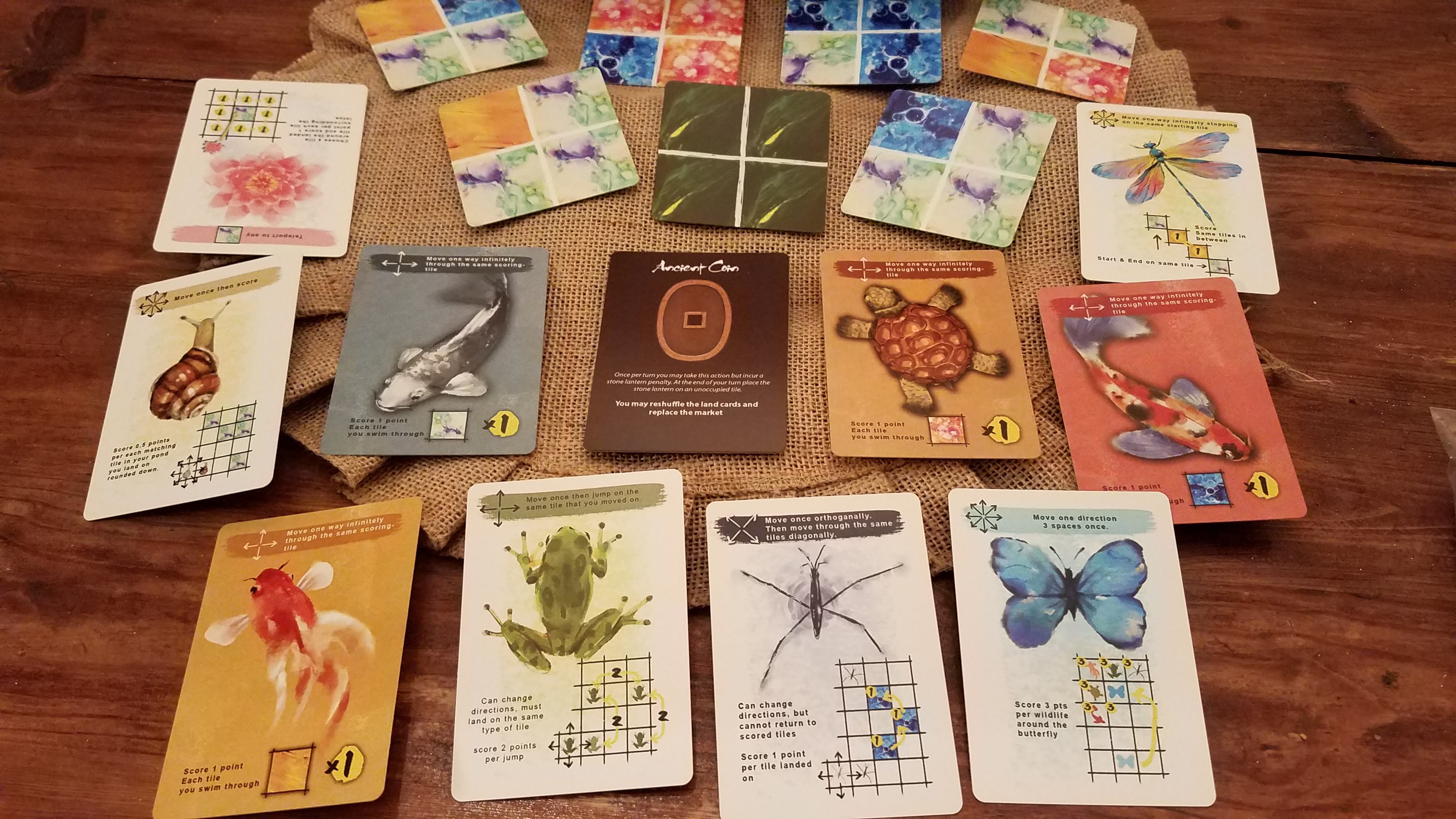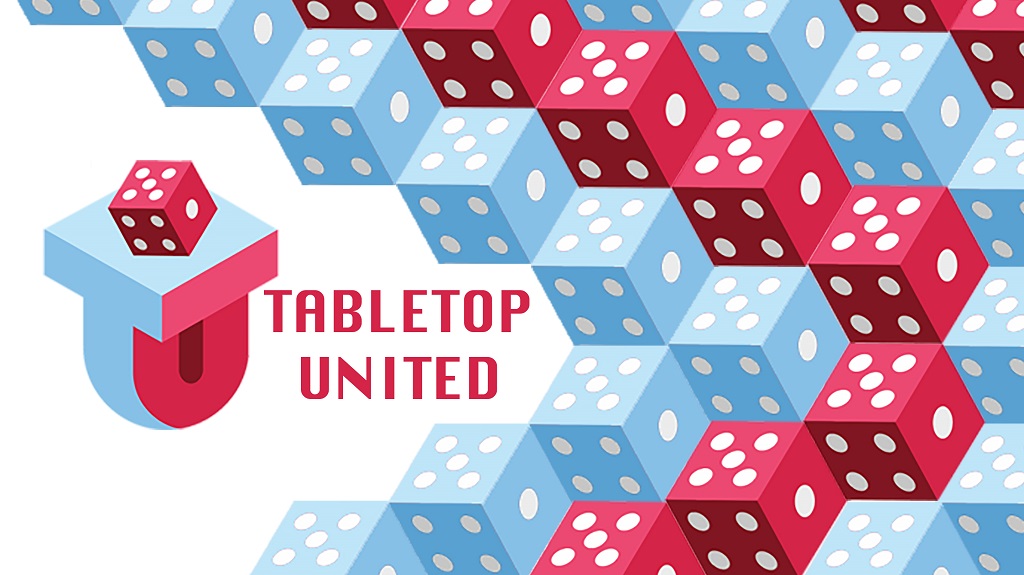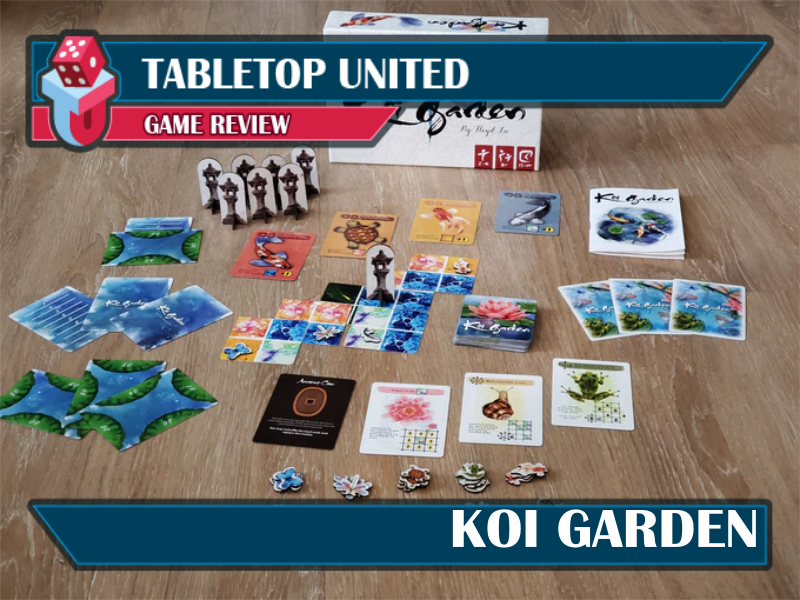 Swimming with the Fish...and other Critters:
Swimming with the Fish...and other Critters:
A Review of Koi Garden
Designer: Floyd Lu
Artist: Darina Lapkovskaya
Publisher: Self-Published
Year Published / Kickstarter: 2021
No. of Players: 2-4
Ages: 7+
Playing Time: 20-30 minutes
Main mechanic / Theme: Tile laying, card drafting, abstract
You’ll enjoy Koi Garden as much as the wildlife attracted to a real Koi garden.
Find more info on BoardGameGeek.com
Find more info on Kickstarter
Disclaimer: Publisher provided a prototype copy of the game for this review.
Overview:
In Koi Garden, players draft tiles to lay over quadrants of previously placed tiles to create pathways for various wildlife to travel through. Each animal or insect attracted to your Garden has different traveling rules so forming your Garden is important depending on which animal will be scoring and traveling through your Garden. The winner of Koi Garden is the player who has successfully managed to create the best pathways for the various visitors to travel through, thereby earning the most point. 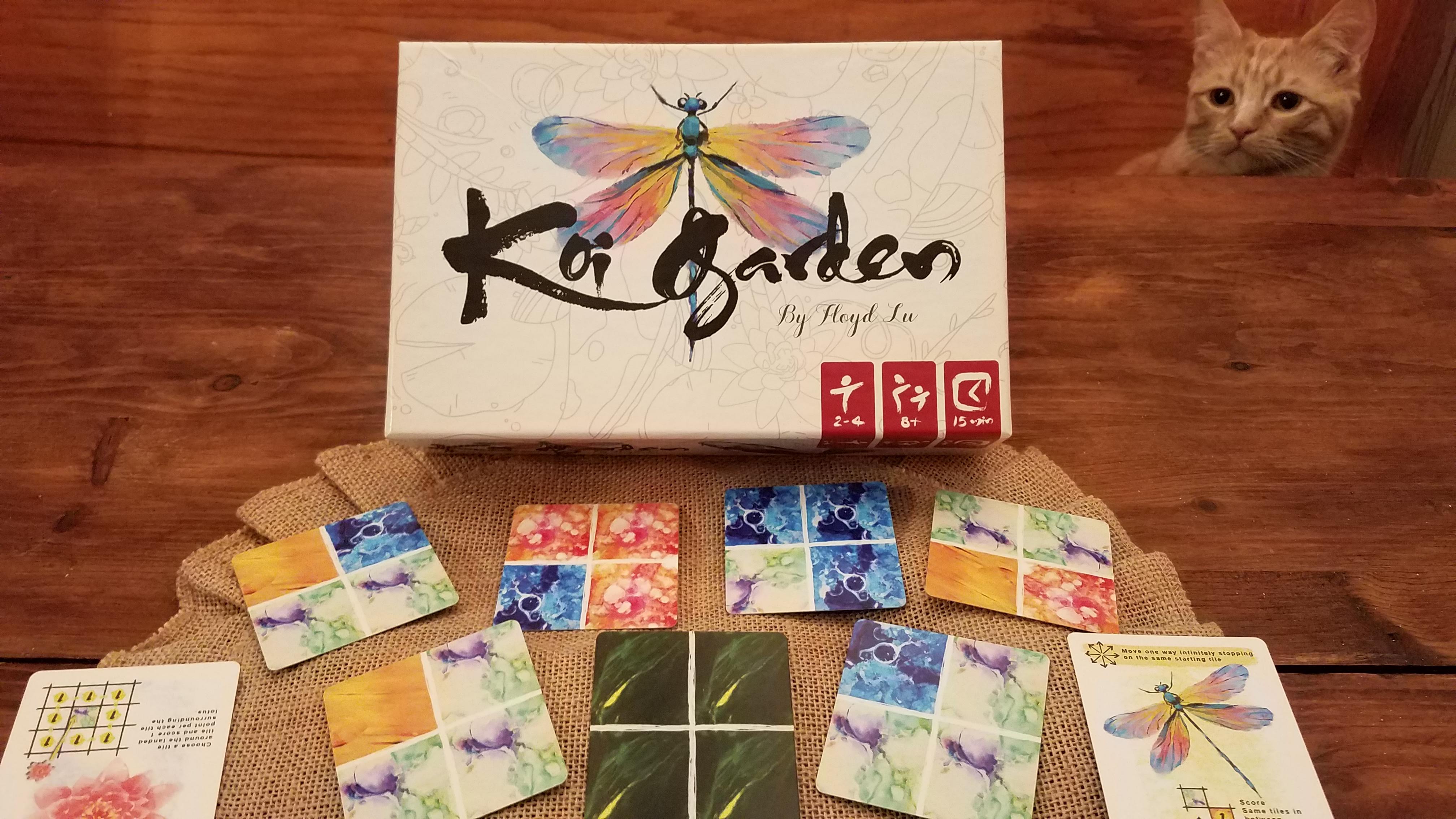
Gameplay and mechanics:
Drafting and choosing tiles is very important in Koi Garden. Placing the wrong tile means that the some of the wildlife visitors will score lower points than others. For example, A turtle may move only in a straight line but scores only when travelling through a specific type of tile. Creating your Garden with the upcoming animal in mind is important. Strategically, laying out your Garden for one type of animal doesn’t work so well when the other animals visit. If you find yourself creating some not-so-great patterns with your Garden tiles, you can choose to use the available tool. Tools do different things, but, you’ll only have one tool type available to you each game. As an example, a rake allows you to reserve a land card for future use. Using a tool is helpful, but relying on that helpful benefit comes at a penalty. When using a tool, take a stone lantern token and place it on any location within your Garden. The stone lantern is impassable and blocks the travel of the wildlife visiting your Garden. The more lanterns that you have, the more difficult it is to score points as your longer and longer pathways become blocked.
Planning ahead is important, but, also, having good spatial abilities is important. You’ll have to decide which way to rotate which tile and where to place it. Each animal moves differently. Frogs jump and leap across other tiles while butterflies gain more points for the number of wildlife and creatures around it. This means that Koi Garden is great with helping younger players learn about spatial awareness while keeping the adults satisfied with a deeper experience.
Don’t get me wrong. The game is not a brain burner. The game fits a niche and allows younger players to learn about spatial awareness and planning ahead while allowing the deeper, puzzling parts of the game to satisfy more experienced and older players.
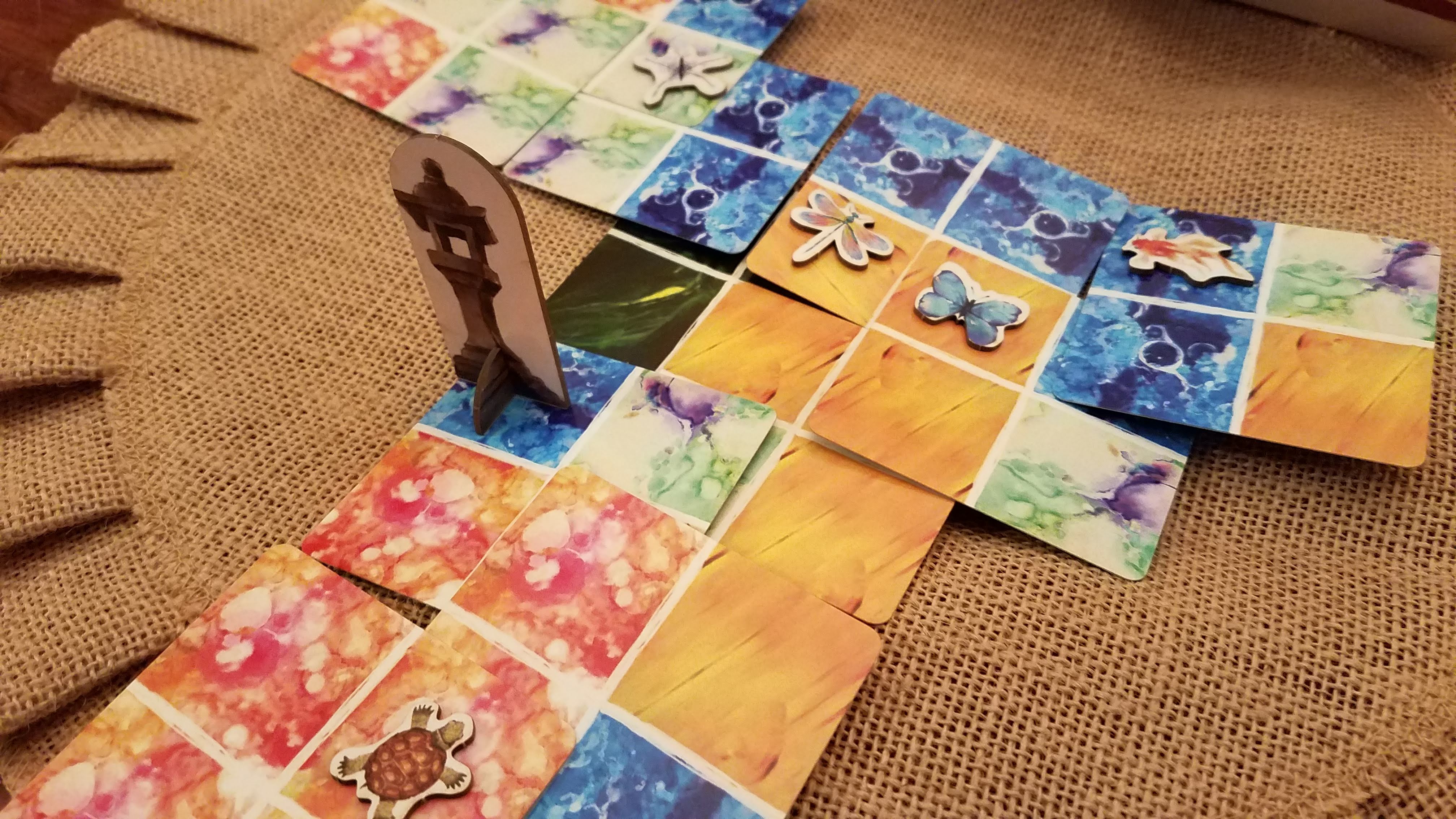
Theme, Artwork and Illustration, Graphic Design and Layout
Koi Garden is an abstract game, but you do lay tiles to build your own personal Koi Garden, so the game isn’t all abstracted out. However, the land and Garden tiles don’t necessarily look like a Garden. Of course, having a variety of terrain and spaces for the different wildlife to cross creates an interesting design challenge- Should the game look more realistic, and if so, how does that create game playing problems? Should the game be much more abstract allowing ease of identifying tiles or should the game look more realistic. In this case, Koi Garden uses tiles with easy to identify terrain types separated into quadrants into easily identified types. Adding physical tokens on top of the tiles is a great concept and adds visual interest to your game. The pieces are colorful, eye-catching, and add to the enjoyment of the game. There is little text, so iconography and layout of text isn’t as important in Koi Garden as it is in other games.
The colors are well done and the different quadrants on the tiles had to be different enough so players can identify the spaces for their animals to travel through, across, and over. The game would be hard to play if all of the spaces were not so well delineated.
Personally, I wish the Garden tiles were more realistic looking so that you’d have a better looking Garden, visually, than the mostly abstract nature of the tiles that are currently there. However, that’s a personal opinion and as stated above, making more realistic tiles would hamper game play- especially in identifying the types of terrain on tiles.
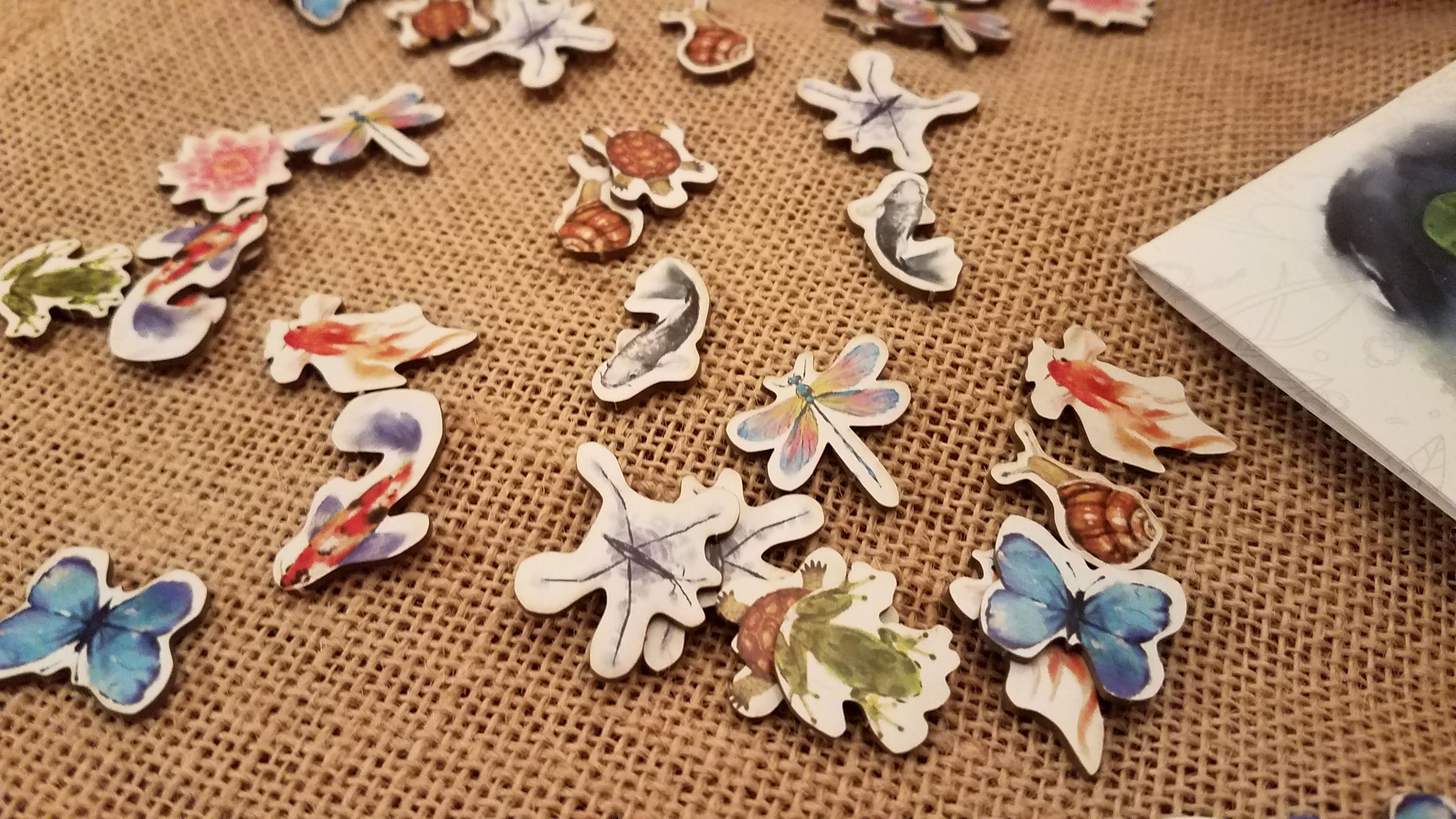
Inclusivity and Accessibility:
Tabletop United believes that diversity is a source of fun and happiness. Nurturing and celebrating our personal differences can lead to amazing gaming (and life) experiences.Therefore, TTU is putting renewed emphasis on inclusivity and accessibility by adding a section in each of our reviews written after April 2021. You’ll begin to see more reviews with this section as time goes on. The inclusivity and accessibility section will critique those issues and strengths of the subject in the review based upon the unique background of the reviewer. Each reviewer views the world through their own particular lens and has a wide and varied experience from which they will write and review from.
As a colorblind player (8% of males and .05% of females) I’ve found that even though a small portion of people are colorblind, being colorblind affects 100% of the people at the table as I’m constantly asking what color is what or who’s token is where. However, in this game, the more abstract nature of the tiles in Koi Garden allows me to easily identify the tiles and different terrain types available. In addition, each animal and wildlife token is shaped to look like their animal counterpart so identification is no problem at all. The artwork is nice and even with the abstract nature of the game, it is enjoyable to me and I’m glad that the style, colors, and current design in this prototype was chosen.
Since manipulating tiles is important- placing, rotating, and overlaying- the game may be more difficult for people who are less dexterous than others. Players will want to keep their tiles in order. Younger kids may not have the precision needed to place and rotate tiles as needed in this game. However, that doesn’t mean that the game can’t be enjoyed by everyone. A little help from another adult or helpful companion would mean most players can work towards building their own little Koi Garden.
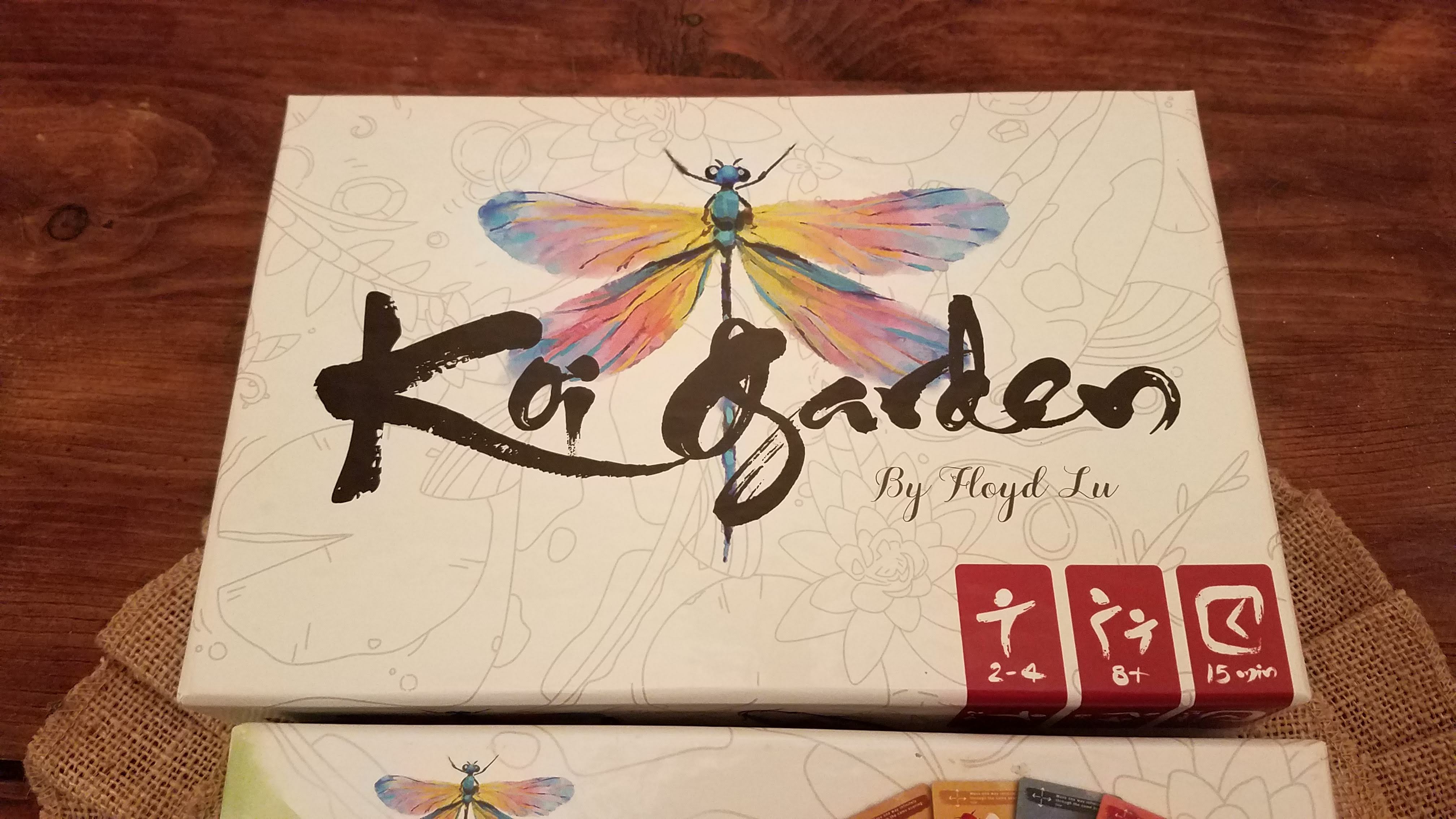
What worked:
Koi Garden works well for it’s simplistic nature. Laying tiles and having animal tokens move across to score points. Having too many mechanics would distract or interrupt the beauty and choice in the game. You’ve got one major strategy- to lay and rotate tiles in order for wildlife to take the best path across your growing Koi Garden- and Koi Garden does that well. Throwing too much chrome or too many pulleys and levers into the game would make it cumbersome. In addition, adding the animal and wildlife tokens on top of the tiles makes for a visually interesting play area. Passersby would probably be interested to see what was on the table as the game does look good on display.
Final thoughts:
As I played Koi Garden I thought tile placement was similar to Honshu published by Renegade Games. However, a big difference is how scoring is done. So, beyond the tile placement, both games are definitely dissimilar! I would agree, though, that players who enjoy tile placement games and trying to build paths will like Koi Garden. The game is simple, and it does it’s job well. You’re not going to get a brain burner from this one, and a wide variety of people should enjoy the speed and pace of the game. For your Kickstarter money, take a look at Koi Garden.
